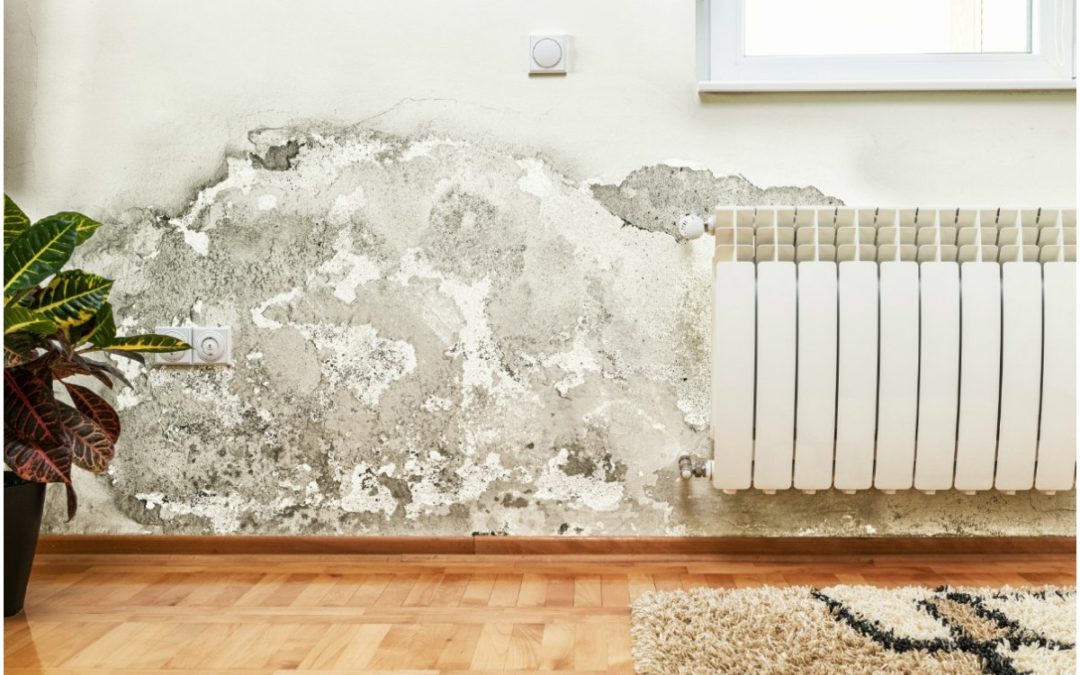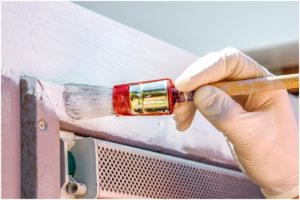- Radon
What is radon?
Radon is a naturally occurring, radioactive gas that comes from the decay of uranium in the soil. Radon tends to enter buildings at its lowest point. It typically moves up into your home through cracks and other holes in the foundation. It is then trapped inside where it can build up and become hazardous.
About one in 15 homes have high levels of radon, with levels usually being the highest in basements and first-floor rooms that have contact with soil. Two adjacent homes, even two adjacent rooms, can differ significantly in their levels of radon. This helpful resource shows the areas of the U.S. with the highest natural levels.
Why is it dangerous?
Known as the “silent killer,” radon is invisible, odorless, and tasteless, so you may have the toxin present in your home and not even know it. Exposure to radon for long periods of time increases your risk of developing lung cancer, especially if you smoke.
How do I test for radon?
There are no immediate signs or symptoms to alert you to the presence of radon. So if you haven’t checked for it in the past two years, or if you’ve done some remodeling, be sure to test your home. You can hire a professional tester or you can buy a test online or at a hardware store to do it yourself.
When should I call a professional?
If your home has a radon level of four picocuries per liter of air (pCi/L) or higher, it has become a health hazard and you need to make changes immediately. However, there is technically no safe level of radon, so you may still want to take action if the level is between two and four pCi/L. Lowering high radon levels requires technical knowledge and special skills. Therefore, the EPA recommends hiring a qualified radon mitigation contractor to assess and fix your home.
- Carbon Monoxide
What is carbon monoxide?
Carbon Monoxide is a toxic gas found in the fumes of fuels that contain carbon, such as wood, coal, and gasoline. Household tools and appliances that can produce the gas include grills, lanterns, generators, home features like your fireplace and furnace, and even your car or truck.
Why is it dangerous?
This toxic gas causes the most nondrug poisoning deaths in the United States. Because CO is colorless, odorless, and tasteless, people can die from carbon monoxide poisoning while they’re asleep without ever waking up. The problem occurs when carbon monoxide is produced but isn’t provided anywhere to exit the home, causing the toxin to build up and reach hazardous levels.
How do I prevent CO poisoning?
- Don’t use a generator or gasoline/charcoal-burning device indoors, including garages or basements. Be sure to place them outside, at least 20 feet from windows or doors.
- Have all fuel-burning home heating systems inspected and serviced each year.
- Never run your car or truck inside of a garage and always leave the door open if you’re doing so in a detached garage. Also, be sure to have your car or truck’s exhaust system checked each year.
How do I test for carbon monoxide?
Every home needs a carbon monoxide detector. If your home doesn’t have working CO alarms installed, stop what you are doing and install them immediately. Be sure to have detectors on each level of the home and outside all bedrooms.
When should I call a professional?
The initial symptoms of CO poisoning can be mistaken for flu symptoms. You should suspect CO poisoning if more than one member of the family is sick and if those who are sick feel better after being away from the home. You should also go to the hospital right away if you’ve been exposed to a source of CO, even if you don’t show symptoms of CO poisoning.
If you think CO is affecting you or if your detector alerts you to an excess of CO in your home, go outside immediately and call 911. Don’t reenter your home until the emergency responders say it’s safe. Afterward, you will want to have your home inspected to determine the root cause of the issue so that you can call the appropriate technician to fix the problem.
- Lead Paint
What is lead paint?
Lead is a naturally occurring element found in small amounts in the earth’s crust. The primary source of lead poisoning is lead-based paint. Poisoning occurs by breathing or swallowing lead dust, or by eating soil or paint chips that contain the hazardous substance. Found most frequently in homes built before 1978, lead paint creates toxic dust when it cracks or peels. This can occur on both the inside and outside of your home.
Why is it dangerous?
Lead poisoning is a serious condition and at very high levels, it can be fatal. Lead is toxic to everyone, but children younger than six years are especially vulnerable. It can cause a range of adverse health effects, including behavioral disorders, learning disabilities, and other major health problems.
How do I test for lead?
If your home was built before 1978, the EPA strongly recommends that either a certified lead inspector or a certified lead risk assessor do lead tests. You can test for lead yourself with an at-home kit. However, these DIY tests don’t provide the details that an inspection or a risk assessment does.
How do I prevent lead poisoning?
If your home tests positive for lead, take these measures to keep your family safe:
- Keep children away from peeling paint or chewable surfaces painted with lead-based paint.
- Wash your children’s hands and toys regularly.
- Regularly clean floors, windowsills, and other surfaces using wet methods.
- Use doormats and remove shoes before entering so lead dust does not settle on floors and carpets.
4. Mold
What is Mold?
Molds are various types of fungi. In small amounts, mold spores are usually harmless. However, once the spores are inside and have a source of moisture to feed on, mold growth can spread like wildfire. Mold can enter your home through windows, vents, and doorways. It can also make its way inside by attaching itself to clothing or pets. If undetected for long enough, it can damage the structure of your house and harm the health of those living inside of it. If caught early, this can be an easy problem to fix.
Why is it dangerous?
Some of the more minor health effects from mold exposure are chronic cough and fatigue, eye irritation, headaches, and skin rashes. If left untreated, mold can cause a variety of more extreme health issues like asthma, vomiting, allergy development, circulatory damage, and compromised immunity, making one even more vulnerable to further risks.
How do I prevent mold from growing?
- Act quickly when water leaks or spills occur indoors.
- Remove or replace carpets that have been soaked and aren’t dried promptly. Consider not using carpet in rooms or areas like bathrooms or basements that may have a lot of moisture.
- Ventilate shower, laundry, and cooking areas.
- Wash shower curtains and bathroom tiles regularly with mold-killing products.
- Promptly fixing leaky roofs, windows, and pipes.
- Keep humidity levels as low as you can – no higher than 50% – all day long.
When should I call a professional?
Combating mold can be a fact of life for those who live in humid climates. In some situations, homeowners can remove mold themselves. However, it’s best to call a professional if –
- The mold covers a large area (greater than three feet by three feet, according to the EPA).
- If you can smell mold, but you can’t find the problem.
- If anyone in the home has a medical condition that mold exposure could worsen.
- There is mold in your heating, ventilation, and/or air conditioning system.
- If moisture has created structural problems.
Originally published by Redfin


